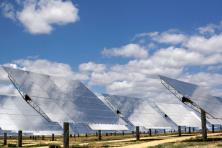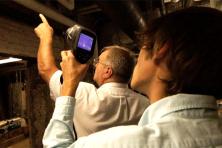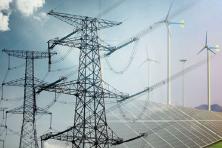As 2013 gets underway, the United States continues to operate without national climate or energy policies, nor national carbon pricing. Meanwhile, the rate of sea-level rise in the past decades is far greater than projected, Arctic Ocean ice is disappearing much faster than had been forecast, and 2012 proved to be the hottest year on record.
In the absence of national leadership, the imperative for local action to significantly reduce carbon emissions could not possibly be more urgent.
Climate Solutions’ New Energy Cities team works on the frontlines of city-led climate and clean energy innovation, assisting small- to medium-sized Northwest communities to significantly reduce carbon emissions by adopting climate-smart, clean energy solutions in eco-mobility, renewable energy, highly efficient, intelligent buildings, and smart grid technology.
We help city and community leaders push the envelope on carbon-reduction strategies in an attempt to answer a fundamental and difficult question: how do cities grow with strong economies while reducing their carbon footprints?
In order for us to help cities answer this question we take a systems approach. We deliver sustainable energy plans that look at both the broad strategies that must be employed to reach long-term carbon-reduction, as well as specific tactics that must roll up to the overall targets.
In 2013, we have three strategic focus areas: cluster cities, climate and clean energy solutions how-to, and robust communications.
Cluster Cities: We will develop two separate clusters of cities, one in the Puget Sound region, building upon our 2012 work developing carbon calculations and emissions projections for the City of Issaquah, as well as strategies to attain carbon reduction in the built environment, transportation, waste/water management, and carbon storage.
The second cluster will be in Oregon and will work in conjunction with both Clean Energy Works Oregon, as well as the Oregon Governor’s Office, which in its 10-Year Energy Action Plan has articulated the desire to promote the sustainability and carbon reduction efforts of “cutting-edge communities.”
The desired outcome of our cluster strategy is twofold: (1) communities in Washington and Oregon developing and implementing ambitious carbon-reduction and carbon-storage strategies related to the built environment, transportation, waste and water management and, (2) support for statewide climate efforts in Washington and Oregon with an eye toward building regional support for climate and clean energy solutions.
Climate and Clean Energy Solutions How-To: With this strategy we aim to translate what we learn and test with our cluster strategy into practical clean energy how-to guides for cities that can be useful to communities throughout the country.
A key aspect of this work is delineating: 1) what cities do to create sustainable energy plans that is generic and therefore easily replicable, and 2) what is tailored, and therefore is not easily replicated and requires customization.
A second key component is the focus we are placing on threading the needle with utilities, which means understanding what the barriers are to utility innovation with energy efficiency, renewable energy, and smart grid deployment, and figuring out how to address them with key utility players.
A third component is drilling down on the clean energy financing strategies that actually work versus those that are abstract and waiting to be tested.
The desired outcome with our climate solutions how-to work is proof that city-led climate and clean energy solutions are working and can be financed and scaled.
Robust Communications: All of our 2013 work has a significant communications component because we know that the key to success is replication and the key to replication is figuring out how to communicate what is really happening with clean energy innovation.
This presents a challenge because this is such a dynamic field, so staying on top of what works is hard, but we have been in this arena long enough now that we know who the key innovators are and we think we know what works.
Our strategic communications approach requires staying current on a weekly basis with current trends, which we accomplish by writing our Weekly Wrap; ensuring that we are extrapolating our learning by writing bi-weekly blogs; making sure we are communicating to our base, which we do by sending out our bi-monthly newsletter; and making sure we are compiling and synthesizing our work by developing our clean energy how-to guides.
The desired outcome for our communications strategy is evidence that the case studies, reports, webinars, conferences, blogs, and hands-on work that the New Energy Cities team engages in result in cities replicating climate solutions.
Here's to a productive 2013!




